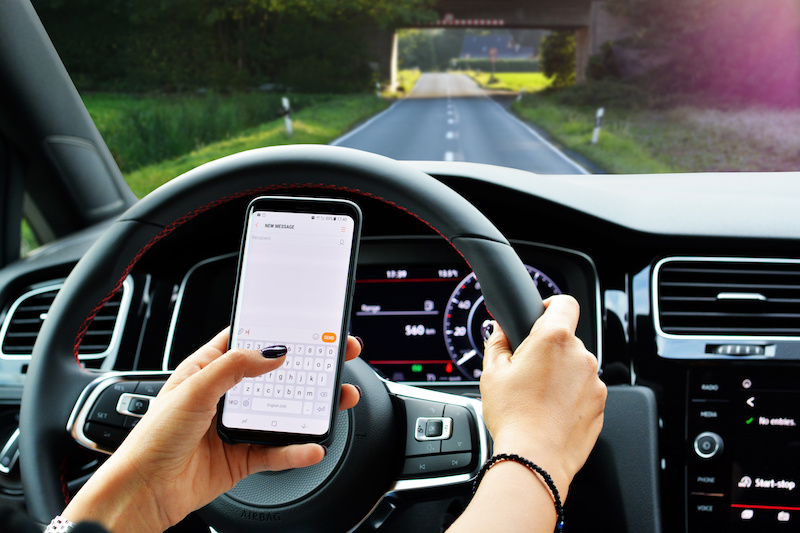Have you considered how your driving habits might be putting yourself and others in danger? Most of us are guilty of the occasional rolling stop or speeding when we’re running late. But these risky driving behaviors can have severe consequences, turning an ordinary commute into a life-altering event.

Table Of Contents:
- The Spectrum of Risky Driving Behaviors
- Unpacking Psychological Factors Behind Risky Driving
- Strategies for Mitigating Risky Driving Behaviors
The Spectrum of Risky Driving Behaviors
When it comes to being safe on the roads, recognizing the various kinds of dangerous driving habits is critical. This includes actions like speeding, aggressive driving, distracted driving, and impaired driving.
Speeding – A Common Yet Dangerous Habit
Speeding, a common yet dangerous habit, puts everyone on the road at risk. It’s not just about breaking traffic rules but also increasing chances for accidents and severity of injuries in case one occurs.
Aggressive Driving – When Emotions Take Over
Sometimes our feelings take over when we’re in the driver’s seat, resulting in impulsive driving habits. Tailgating or rapidly changing lanes without signaling are examples that increase accident risks exponentially.
Risky behaviors don’t stop there; distraction from electronic devices or other passengers can lead to distracted driving. Texts or calls might seem urgent, but remember no message is worth risking lives over.
Dangers Lurking Behind Impaired Driving
Beyond these factors lies another significant concern: impaired driving due to drug or alcohol use, which inhibits your reaction time, making you a potential hazard on roads.
In 2018 alone, many types of drugs and medication led people into unsafe situations with tragic outcomes. From prescription meds causing drowsiness to illegal substances hindering motor skills – all have their role in impairments affecting safe mobility.
Note: If you ever feel unwell after taking any medication, refrain from getting behind wheels until you feel better again.
Unpacking Psychological Factors Behind Risky Driving
We often hear about the dangers of risky driving behaviors, but what drives us to engage in them? The answer lies deep within our psyche. It’s not just about ignoring traffic safety rules; it’s also how we perceive risk and react to it.
Risk Perception – How it Influences Driving Behavior
The way we view danger plays a big part in our driving habits. Some drivers may feel invincible behind the wheel, downplaying the real risks involved. Others might be overly cautious, which can lead to its own set of problems on the road.
Sensation-seeking behavior and impulsivity are other psychological factors that contribute to dangerous driving habits. Drivers with these traits tend to seek out thrilling experiences like speeding or aggressive maneuvering without considering their impact on others’ safety.
Then there’s peer pressure—an external influence that could sway someone into risky behavior they wouldn’t usually indulge in when alone. For instance, showing off while among friends or underestimating dangers because “everyone else is doing it” can easily tip the scales toward unsafe actions behind the wheel.
Tackling These Behaviors Head-On
To change these attitudes, understanding is key—we need targeted interventions addressing each individual’s perception of risk along with any underlying impulsive tendencies or susceptibility towards peer pressure.
National Highway Traffic Safety Administration (NHTSA) offers numerous resources aimed at enhancing safe driving behavior and combating destructive perceptions surrounding roadway conduct.
Note: A staggering statistic reveals drivers continue engaging in risky behaviors despite being aware of potential repercussions—this suggests knowledge alone isn’t enough, it’s our attitude that needs fixing.
Strategies for Mitigating Risky Driving Behaviors
One effective strategy to combat risky driving is through education. Can’t fix a problem without comprehending it, right? So, understanding the root causes of dangerous habits like speeding or aggressive driving allows us to create more impactful solutions.
The Role of Education in Promoting Safe Driving
Educational initiatives are vital in raising awareness about these hazardous behaviors. They help drivers recognize their own actions that may put themselves and others at risk on the road.
To illustrate, reinforcing safe behavior with someone we know can influence them to change their driving habits. Knowledge really is power here.
But let’s not forget technology’s role. Innovations such as automatic emergency braking systems and collision warnings are invaluable tools in our fight against unsafe driving.
Apart from individual efforts, larger entities have a part to play too. Traffic safety advocacy groups and law enforcement agencies work together tirelessly to reduce traffic fatalities caused by reckless maneuvers on our streets and highways.
If you or a loved one have found yourselves in a car accident, do not hesitate to contact our experienced attorneys at Silver Injury Law. With decades of practice in South Florida, they have the full spectrum of personal injury cases covered, including truck accidents and pedestrian accidents.




